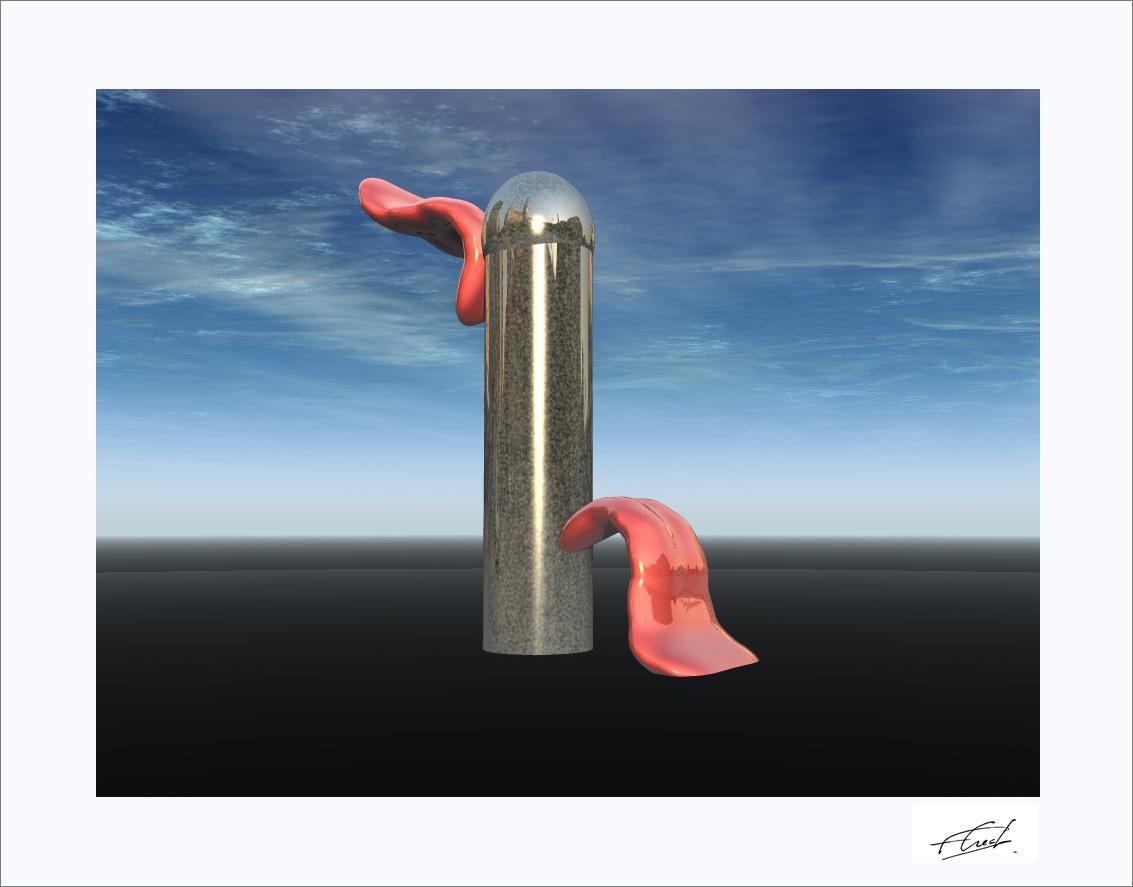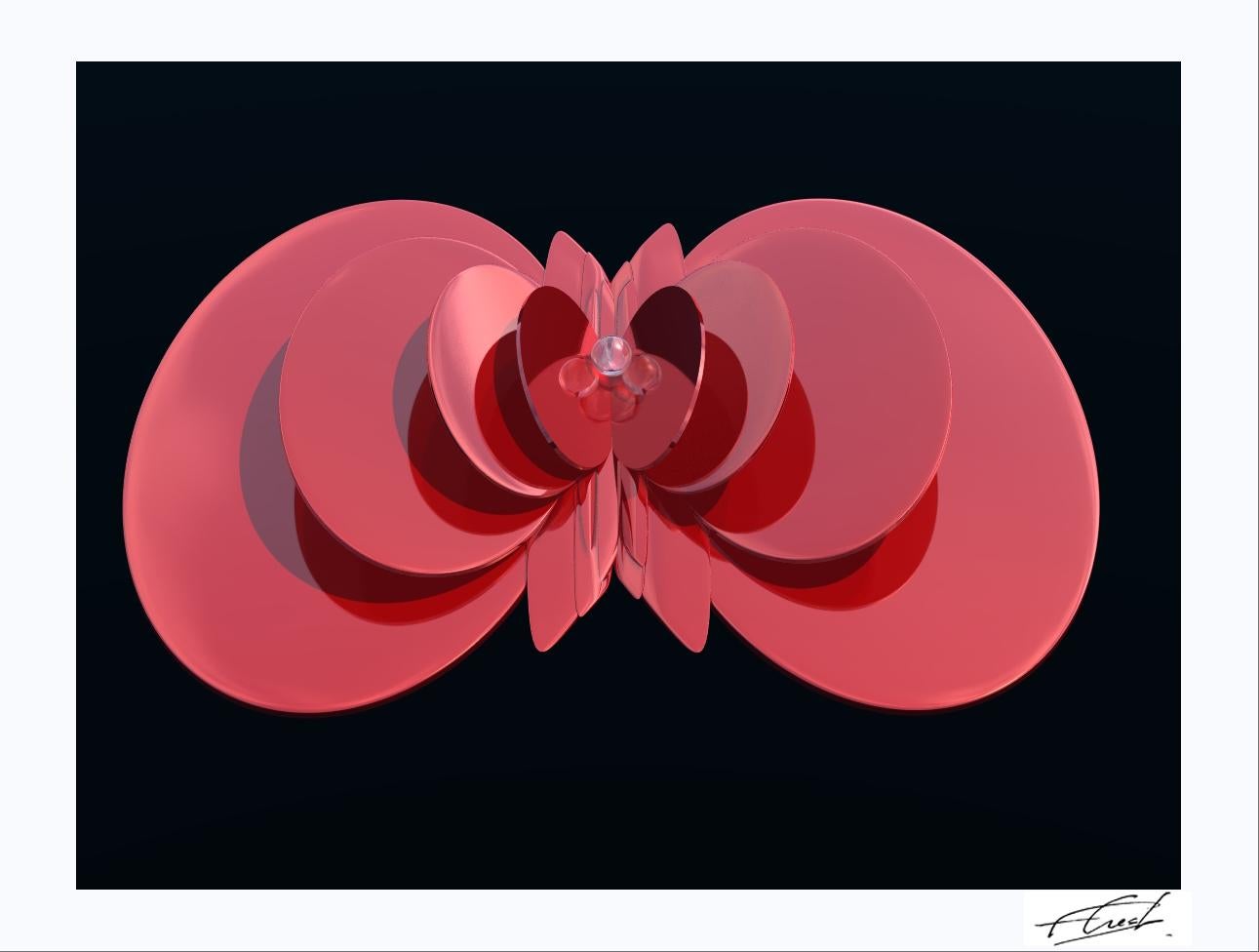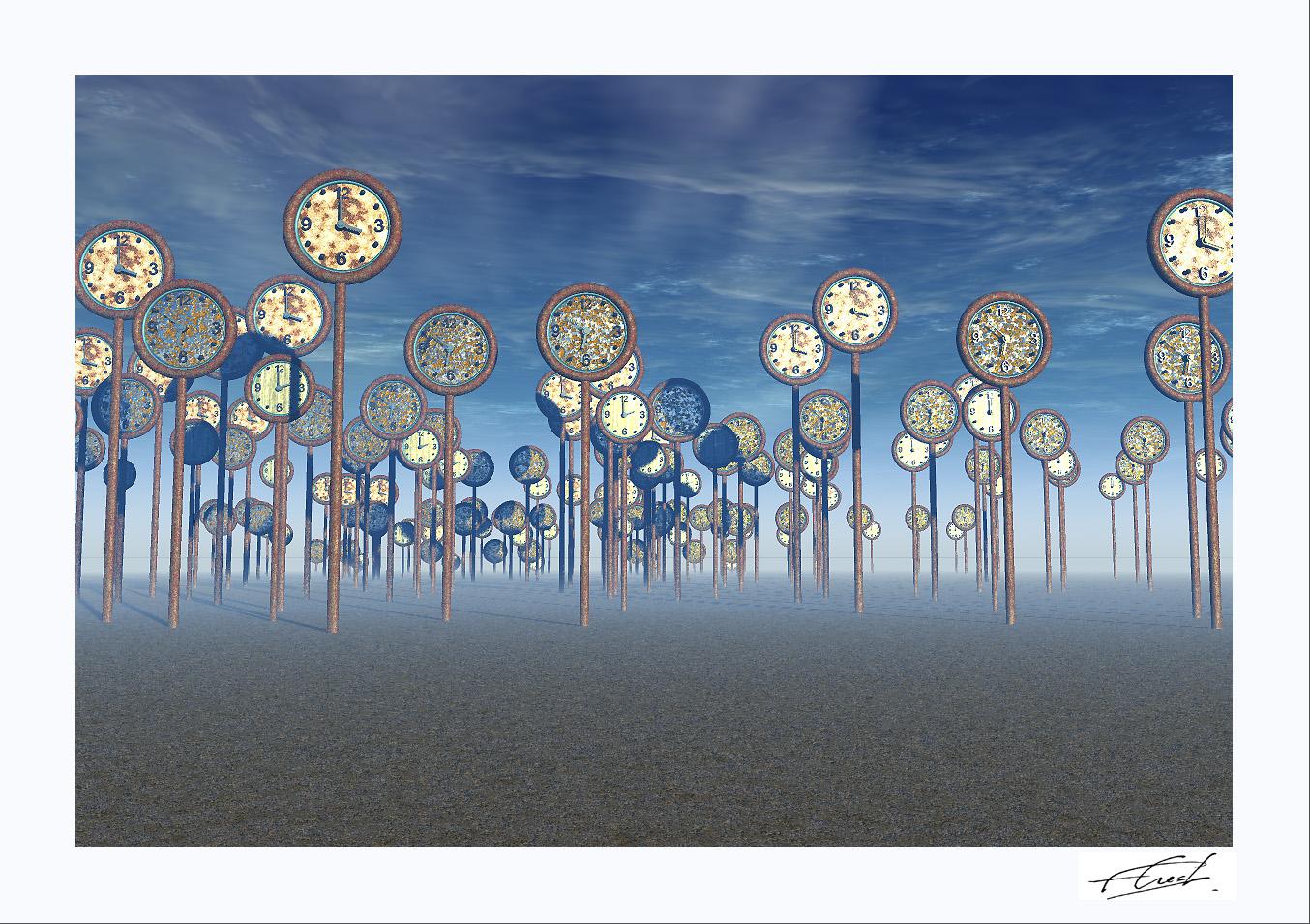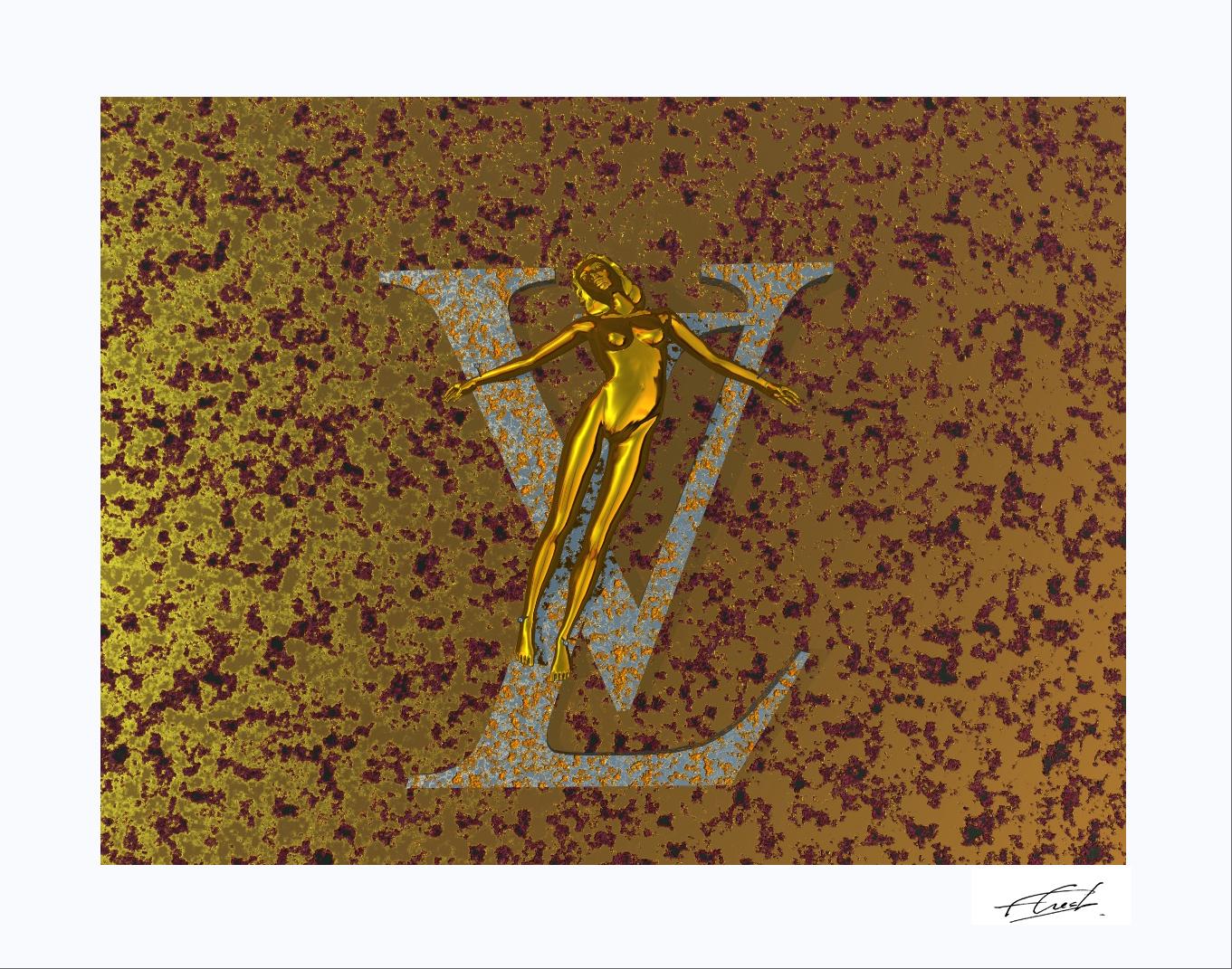Items Similar to Blue Planetary Relief (RP6), 1961, 2015 (Certified by Yves Klein Archives) 35/50
Want more images or videos?
Request additional images or videos from the seller
1 of 7
Blue Planetary Relief (RP6), 1961, 2015 (Certified by Yves Klein Archives) 35/502015
2015
About the Item
Yves Klein (after)
Untitled Blue Planetary Relief (RP6), 1961, 2015
(Certified by Yves Klein Archives), 2015
Color Inkjet Print
29 3/4 × 39 3/4 inches
Edition 32/50
Signed in plate, stamped by artist's estate, Hand numbered with authorized plate signature, with Yves Klein Archives blind stamp/certification on the front
Unframed
From a very small edition of only 50 and fully authorized by the artist's estate, the Yves Klein Archive, this high quality print shows a detailed and textured relief rich with his signature electric IKB color. It is hand numbered from an edition of only 50 and was produced in 2015, after an original from 1961. It is also plate signed and has an embossed blind stamp and certification from the Yves Klein Archives.
About Yves Klein:
Artist, theorist, and provocateur, Yves Klein was a wide-ranging thinker who worked in painting, sculpture, performance, photography, music, architecture, and criticism. His name is often linked to the European avant-garde group Nouveau Réalisme (New Realism), but Klein was not a true realist. Instead, he aimed to reimagine the world in spiritual terms through an exploration of color, light, and space. Although his career lasted only eight years, he produced a groundbreaking body of work that is considered seminal for the later development of both Minimalism and performance art.
Klein was born in Nice, France, to parents who were both painters. During the 1940s, before deciding to become an artist, he taught Spanish, explored the esoteric doctrine of Rosicrucianism, and made a serious study of judo, earning a black belt in 1953.
In 1955, Yves Klein had his first public showing of his monochrome oil paintings, presenting a new and controversial form of abstraction that only featured a single color. At the Club des Solitaires in Paris, Klein adorned the walls with intensely vibrant canvases in colors like magenta, yellow, red, and blue. His objective, to fully reject representation in art, was completely misunderstood by the audience, even a year later when Klein presented these works again at Galerie Colette Allendy. These early viewers interpreted the works as a splashy new style of interior decorating. Klein, disappointed but not deterred, instead turned further toward monochrome, later calling the style an “open window to freedom.” He worked with a chemist to formulate and patent his very own color for these paintings—a strikingly saturated ultramarine blue, which he named International Klein Blue (IKB). Satisfied with the color’s ability to transcend the material world, Klein spent the rest of his career creating monochrome canvases, reliefs, sculptures, furniture, and even balloons in this signature color.
In 1958, Klein staged an exhibition entitled The Void. Visitors entered through curtains dyed in IKB only to encounter a nearly empty gallery that Klein had painted pure white. In 1960, he performed a Leap Into the Void. A photograph of the event appears to show “the painter of space” flying ecstatically into the sky from the roof of a building in suburban Paris. But the document was faked. Klein did jump off the roof, but he had arranged for a group of friends to catch him with a tarpaulin. Two negatives—one showing the jump, and the other showing the empty street—were printed seamlessly together to make the photograph, which Klein distributed on newsstands in a self-published broadsheet entitled Dimanche. Le journal d’un seul jour (Sunday. The Newspaper of One Day). For Klein, the void did not represent emptiness; instead, it signified complete artistic and spiritual freedom.
In 1961, the Museum Haus Lange in Krefeld, West Germany, opened a large exhibition entitled Yves Klein: Monochrome and Fire. Klein himself designed the installation, placing at the center a small room dedicated to “the void,” which was so flooded with white light that the space seemed to dematerialize. The room was left intact and is today a place of pilgrimage for students of Klein’s work.
Klein’s Anthropometries, a series he began in 1960, also merged painting and performance. Nude female models were smeared with IKB paint and used as “living brushes” to make body prints on prepared sheets of paper or canvas. The Walker’s collection includes Suaire de Mondo Cane (Mondo Cane Shroud) (1961), one of Klein’s last Anthropometries. The Italian director Gualtiero Jacopetti documented its creation for his film Mondo Cane, which premiered at the 1962 Cannes Film Festival. When Klein saw the film, he found to his horror that it did not present his Anthropometries as serious art but as an example of shocking, deplorable cultural practices from around the world. Despondent and humiliated, Klein died of a heart attack a few weeks later. Today he is recognized as a pivotal figure who pushed postwar art in new directions by questioning both the physicality of the art object and the role of the artist.
ABOUT YVES KLEIN
Artist, theorist, and provocateur, Yves Klein was a wide-ranging thinker who worked in painting, sculpture, performance, photography, music, architecture, and criticism. His name is often linked to the European avant-garde group Nouveau Réalisme (New Realism), but Klein was not a true realist. Instead, he aimed to reimagine the world in spiritual terms through an exploration of color, light, and space. Although his career lasted only eight years, he produced a groundbreaking body of work that is considered seminal for the later development of both Minimalism and performance art.
Klein was born in Nice, France, to parents who were both painters. During the 1940s, before deciding to become an artist, he taught Spanish, explored the esoteric doctrine of Rosicrucianism, and made a serious study of judo, earning a black belt in 1953.
In 1955, Yves Klein had his first public showing of his monochrome oil paintings, presenting a new and controversial form of abstraction that only featured a single color. At the Club des Solitaires in Paris, Klein adorned the walls with intensely vibrant canvases in colors like magenta, yellow, red, and blue. His objective, to fully reject representation in art, was completely misunderstood by the audience, even a year later when Klein presented these works again at Galerie Colette Allendy. These early viewers interpreted the works as a splashy new style of interior decorating. Klein, disappointed but not deterred, instead turned further toward monochrome, later calling the style an “open window to freedom.” He worked with a chemist to formulate and patent his very own color for these paintings—a strikingly saturated ultramarine blue, which he named International Klein Blue (IKB). Satisfied with the color’s ability to transcend the material world, Klein spent the rest of his career creating monochrome canvases, reliefs, sculptures, furniture, and even balloons in this signature color.
In 1958, Klein staged an exhibition entitled The Void. Visitors entered through curtains dyed in IKB only to encounter a nearly empty gallery that Klein had painted pure white. In 1960, he performed a Leap Into the Void. A photograph of the event appears to show “the painter of space” flying ecstatically into the sky from the roof of a building in suburban Paris. But the document was faked. Klein did jump off the roof, but he had arranged for a group of friends to catch him with a tarpaulin. Two negatives—one showing the jump, and the other showing the empty street—were printed seamlessly together to make the photograph, which Klein distributed on newsstands in a self-published broadsheet entitled Dimanche. Le journal d’un seul jour (Sunday. The Newspaper of One Day). For Klein, the void did not represent emptiness; instead, it signified complete artistic and spiritual freedom.
In 1961, the Museum Haus Lange in Krefeld, West Germany, opened a large exhibition entitled Yves Klein: Monochrome and Fire. Klein himself designed the installation, placing at the center a small room dedicated to “the void,” which was so flooded with white light that the space seemed to dematerialize. The room was left intact and is today a place of pilgrimage for students of Klein’s work.
Klein’s Anthropometries, a series he began in 1960, also merged painting and performance. Nude female models were smeared with IKB paint and used as “living brushes” to make body prints on prepared sheets of paper or canvas. The Walker’s collection includes Suaire de Mondo Cane (Mondo Cane Shroud) (1961), one of Klein’s last Anthropometries. The Italian director Gualtiero Jacopetti documented its creation for his film Mondo Cane, which premiered at the 1962 Cannes Film Festival. When Klein saw the film, he found to his horror that it did not present his Anthropometries as serious art but as an example of shocking, deplorable cultural practices from around the world. Despondent and humiliated, Klein died of a heart attack a few weeks later. Today he is recognized as a pivotal figure who pushed postwar art in new directions by questioning both the physicality of the art object and the role of the artist.
- Creation Year:2015
- Dimensions:Height: 29.75 in (75.57 cm)Width: 39.75 in (100.97 cm)
- Medium:
- Movement & Style:
- After:Yves Klein (1928 - 1962, French)
- Period:
- Condition:
- Gallery Location:New York, NY
- Reference Number:1stDibs: LU1745210609442
About the Seller
5.0
Platinum Seller
These expertly vetted sellers are 1stDibs' most experienced sellers and are rated highest by our customers.
Established in 2007
1stDibs seller since 2022
289 sales on 1stDibs
Typical response time: 1 hour
- ShippingRetrieving quote...Ships From: New York, NY
- Return PolicyA return for this item may be initiated within 1 day of delivery.
More From This SellerView All
- Pegwell Bay, H13-6, from Where the Land Meets the Sea (hand signed limited ed.)By Damien HirstLocated in New York, NYDamien Hirst Pegwell Bay, H13-6, from Where the Land Meets the Sea, 2023 Laminated Giclée print on aluminium composite panel 35 2/5 × 35 2/5 in 89.9 × 89.9 cm Hand-signed on the lab...Category
2010s Contemporary Abstract Prints
MaterialsMetal
- Mill Bay, Salcombe, H13-7, from Where the Land Meets the Sea (mixed media work)By Damien HirstLocated in New York, NYSigned and numbered 185/289 in graphite pencil on the label in the back Acquired directly from the publisher - Heni Editions Inc., UK Mint condition: brand new in original packaging ...Category
2010s Abstract Abstract Prints
MaterialsMetal
- Doldrums, H13-12, from Where the Land Meets the Sea (Hand signed mixed media)By Damien HirstLocated in New York, NYDamien Hirst Doldrums, H13-12, from Where the Land Meets the Sea, 2023 Laminated giclée print on aluminium composite panel 47 3/10 × 35 2/5 × 1/2 in 120.1 × 89.9 × 1.3 cm Hand-signe...Category
2010s Pop Art Abstract Prints
MaterialsMetal
- JBCRIAL1VY-98, pencil signed edition unique variant featured in monograph FramedBy John BaldessariLocated in New York, NYJohn Baldessari JBCRIAL1VY-98 (Unique Variant, Hand Signed), 1998 Ink jet print on paper. Hand signed by John Baldessari on the front 1 of 96 similar works completed Frame included T...Category
1990s Contemporary Still-life Prints
MaterialsDigital, Inkjet, Pencil, Graphite
- Butterfly Heart (Small) H7-4 print on aluminum panel new in publishers packagingBy Damien HirstLocated in New York, NYDamien Hirst Butterfly Heart (Small) H7-4, 2020 Laminated Giclée print on aluminium composite panel in original publisher's packaging Signed by Damien Hirst & numbered 1483/3510 on t...Category
2010s Abstract Abstract Prints
MaterialsMetal
- Vapor painting, hand signed 21/230 (Unique variant) from The Beautiful PaintingsBy Damien HirstLocated in New York, NYDamien Hirst Beautiful, Very Unfriended, Rather Incontrovertibly Clever, Almost Inadmissible But Inordinate Vapor Painting, 2023 Mixed Media Giclée print on poly-cotton artist canvas...Category
2010s Contemporary Abstract Prints
MaterialsBirch, Giclée, Mixed Media, Acrylic
You May Also Like
- ST1b99-Contemporary, Abstract prints, stil-life, figurative, nude, landscapeBy Francisco NicolásLocated in London, LondonFlowers 09, 2019 Edition of 25 Digital pigment print Ultrachrome ink on Fabriano Rosaspina paper. Hand signed by the artist, and certificate of authenticity, (Unframed) His work h...Category
2010s Pop Art Abstract Prints
MaterialsPaper, Mixed Media, C Print, Inkjet, Giclée, Pigment, Archival Pigment
- Abstract Mixed Media Artwork, "Geo #87"Located in San Diego, CAThis is a mixed-media artwork by Monty Montgomery. Its dimensions are 18 x 12 x 1.5 and it is a hand-embellished Giclee print on Canvas with UV Gloss Varnish. A certificate of authen...Category
2010s Abstract Mixed Media
MaterialsMixed Media, Giclée
- Abstract Mixed Media Artwork, "Geo #65"Located in San Diego, CAThis is a mixed-media artwork by Monty Montgomery. Its dimensions are 14 x 14 x 1.5 and it is Hand Embellished Giclee print on Canvas with UV Gloss Varnish. A certificate of authenti...Category
2010s Abstract Mixed Media
MaterialsVarnish, Mixed Media, Giclée
- 'Venus & Shooting Stars Over the Mountain' giclée print canvas signed abstractBy David BarnettLocated in Milwaukee, WI‘Venus & Shooting Stars Over the Mountain’ is a reproduction giclée print on canvas, signed by the artist in the lower center. It is based after the original Mixed Media piece. Alte...Category
2010s Contemporary Mixed Media
MaterialsCanvas, Mixed Media, Watercolor, Foam Board, Giclée
- ST1b99-Contemporary, Abstract prints, stil-life, figurative, nude, landscapeBy Francisco NicolásLocated in London, LondonFlowers 09, 2019 Edition of 25 Digital pigment print Ultrachrome ink on Fabriano Rosaspina paper. Hand signed by the artist, and certificate of authenticity, (Unframed) His work h...Category
2010s Pop Art Abstract Prints
MaterialsPaper, Mixed Media, C Print, Inkjet, Giclée, Pigment, Archival Pigment
- ST0034-Contemporary, Abstract prints, stil-life, figurative, nude, landscapeBy Francisco NicolásLocated in London, LondonDigital pigment print Ultrachrome ink on Fabriano Rosaspina paper. Hand signed by the artist, and certificate of authenticity. Edition of 25 (Unframed) His work has been shown in R...Category
2010s Abstract Abstract Prints
MaterialsC Print, Inkjet, Color, Pigment, Archival Pigment, Mixed Media, Paper





